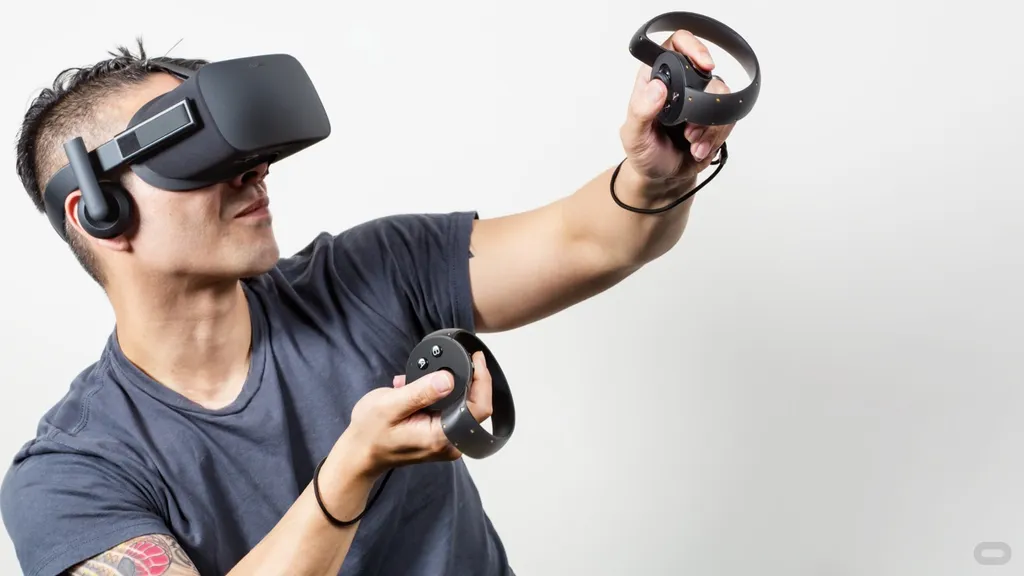Earlier this week a report from TechCrunch threw out “Rift S” as a possible name for the next hardware iteration of the Oculus Rift. The Rift S is suggested to have the Insight tracking system which will ship first on the standalone Oculus Quest early next year, and the decision to ship it as the next iteration of the Rift reportedly contributed to co-founder Brendan Iribe’s departure from Facebook.
We’ve heard from a lot of readers who suggested they wanted huge updates in the next version of the Rift. We think many of those ideas would be wonderful additions, like foveated rendering and eye-tracking, but unrealistic in the next version of Rift.
Whether it is called Rift S or not, here are five things we expect from the next version of Oculus Rift.
Rift S + Controllers Are $200-$300
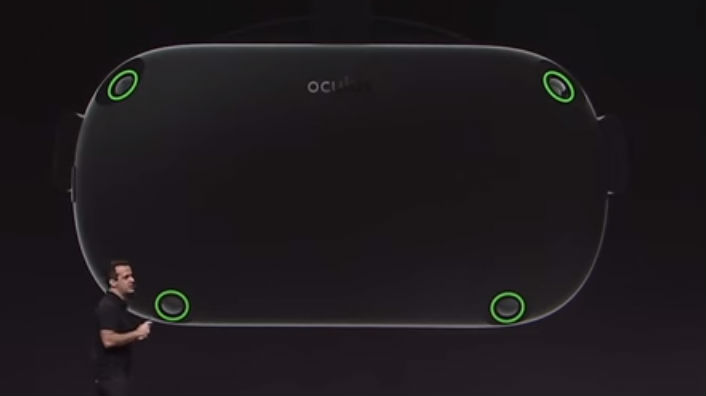
The first and biggest thing Facebook can do to bring PC VR to more people is to lower the overall cost.
$500 is roughly the cost of a room-scale VR headset like Samsung Odyssey or HTC Vive. An Oculus Rift with controllers is $400 plus at least one additional $60 sensor to offer similar walk-around freedom as the other headsets. With the Oculus Insight tracking system used on the forthcoming $400 standalone Quest headset there’s a pathway with Rift S for Facebook to not just reduce the complexity of setting up a Rift, but also to reduce overall hardware cost. You won’t need $180+ worth of specialized USB-powered cameras to walk around a room freely in VR with Rift 2. You also won’t have to mount laser boxes in the corners of your room, as with the Vive or Vive Pro. Insight would bring Rift S in line with the Samsung Odyssey and other Windows-based headsets, which already have easy setup.
With Rift S, though, would combine easy setup with a four-camera arrangement meant to track controller movements in a wider range of positions than the Windows-based systems. The Insight tracking system would also be combined with Facebook’s significant investment in original and exclusive content for the Oculus Store for an altogether cheaper, easy-to-setup system capable of running fun graphically-intensive VR games.
Oculus Rift should be as cheap as Oculus Go and I think there’s a chance Rift S can get there.
Lower Minimum PC Specification
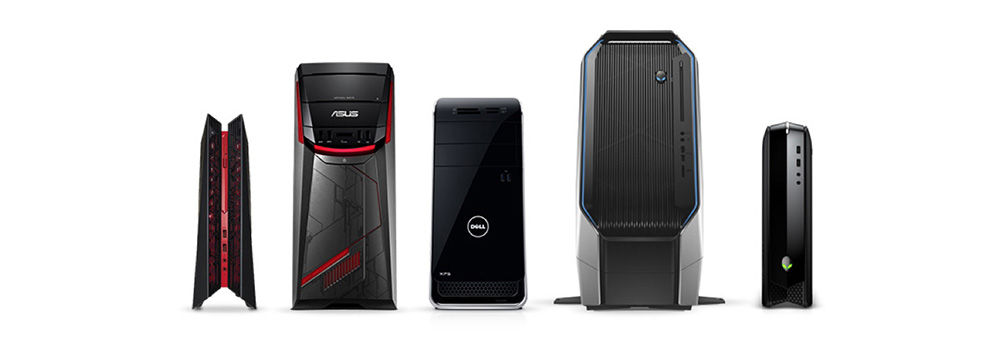
Oculus is a supporter of the new VirtualLink USB-C standard deployed on the latest NVIDIA graphics cards. We think it is likely the next Oculus Rift uses VirtualLink for a more lightweight tether to the PC with an adapter included in the box that would split apart VirtualLink into more traditional USB and DisplayLink/HDMI connectors.
This would ensure Rift 2 would have backward compatibility for every “VR Ready” PC currently on the market. Buyers upgrading from the Rift to Rift S would simply disconnect four or five cords from their PC (two for the Rift, two or more for the camera sensors). The Rift S with adapter would be used to split apart USB and display from the single VirtualLink wire, and these two wires would connect to the same ports as the original Rift. However, there would be two, three or four additional open USB ports on your PC since you don’t need those external sensors anymore.
Facebook has done a a lot of work with a variety of techniques designed to help underpowered PCs deliver an experience with Rift that is still comfortable and fun. We expect work to continue in this area and we think it is highly unlikely Facebook would do anything to increase the minimum specification needed by a PC to run a decent VR experience. Deploying VirtualLink, in fact, might make it easier for PC manufacturers to build new computers that are more compact and less expensive than current systems — again opening up the market for VR to an even larger set of PC buyers.
This all means we fully expect that even if you built your PC in 2016 to run the original Oculus Rift we would expect that PC to run the same content on Rift S at least as smoothly, if not more so. The one potentially HUGE exception here is tracking quality, which we’ll discuss in the last header below.
New Lenses
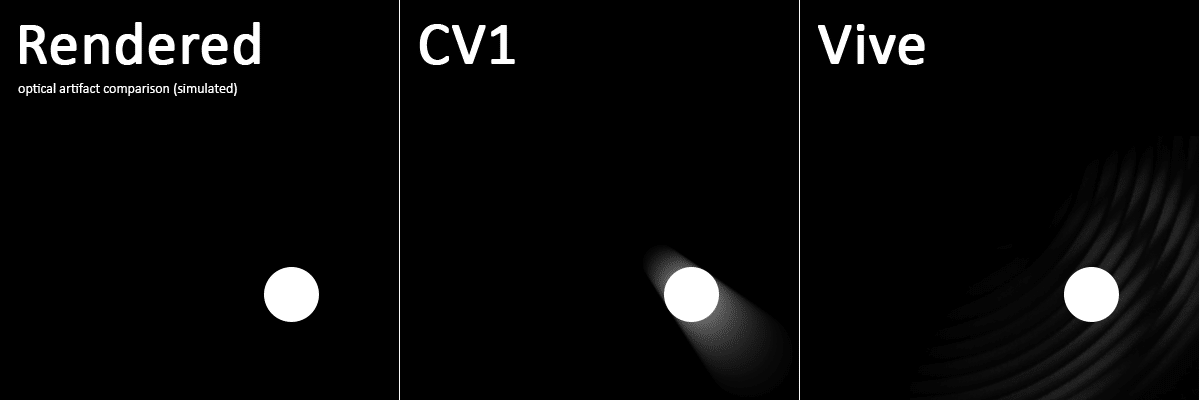
The lenses on the Oculus Rift have been the headset’s weakest point all along. These lenses hide visible concentric rings that are much easier to see in the fresnel designs used in some other VR headsets. The drawback, however, seems to be a tendency for the lenses to catch light in distracting ways — as seen in the above visualization.
While Facebook’s first standalone headset, Oculus Go, features a higher resolution than the original Rift — it also includes next generation lenses that seem to decrease the distracting visual experience we’ve come to know from the original Rift.
The bottom line is we really want next generation lenses on Oculus Rift S.
Oculus Go Or Better Resolution
Oculus Rift delivers 1080×1200 per eye, or nearly 1.3 million pixels. Oculus Go delivers 1280×1440 pixels per eye, or more than 1.8 million pixels. Vive Pro and Samsung Odyssey deliver 1440×1600 per eye, or nearly 2.4 million pixels.
It is certainly understandable to want to see the screen door effect become a thing of the past — as it might become with the new Samsung Odyssey+ headset — and to want features like eye-tracking integrated into headset designs for more intuitive virtual interfaces. Perfect eye-tracking comes with the added benefit of enabling foveated rendering so that VR headsets can render incredible amounts of detail directly in front of wherever your eye is pointed inside a VR headset. The problem, though, is that perfect eye-tracking is very hard to do on every kind of face and every kind of eyeball. Adding eye-tracking hardware to a headset is also an added hardware cost.
The takeaway here is that eye-tracking, foveated rendering, varifocal optics and dramatically increased resolutions aren’t the problems Facebook needs to solve right now to create a larger market for PC VR developers. There are other bottlenecks to VR adoption Facebook’s executives seem to have decided to focus on first — namely, making sure the vast content library on Oculus and Steam is accessible on lower cost and easier to setup hardware.
Tracking Quality Guidance For Developers
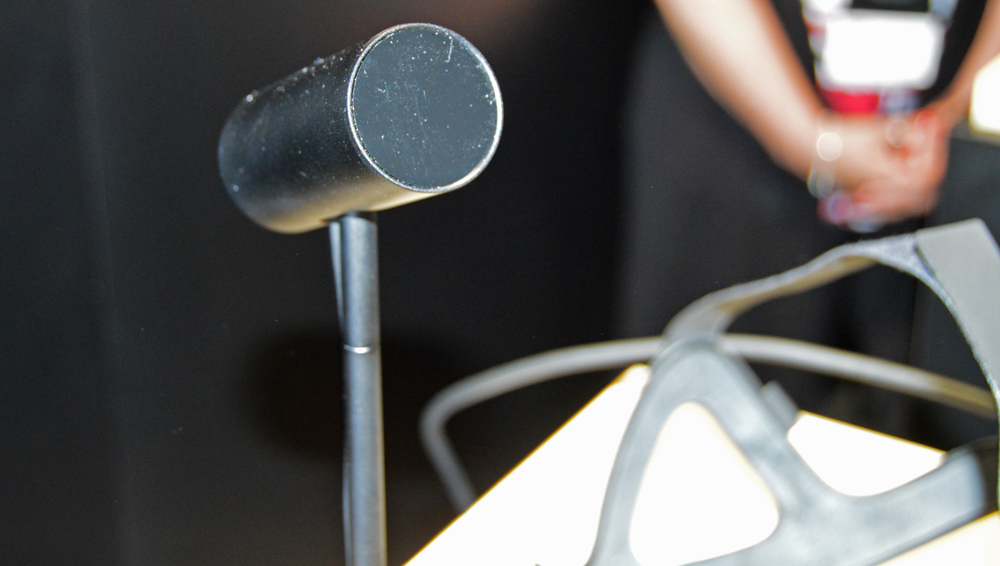
We are pretty confused right now about how Facebook plans to transition PC VR developers from the “outside-in’ Constellation tracking system to the “inside-out’ Insight system.
The transition will likely be complicated because there are very specific interactions where a headset’s cameras are unlikely to see the new Oculus Touch controllers. We encountered interactions with Oculus Quest at OC5 where it seemed like even twisting a knob in a virtual world would turn the tracking rings away from headset’s cameras, rendering them invisible. Likewise, grabbing something from behind your head or keeping your head trained in a particular direction and trying to do things with your hands without looking at them are also instances where the Insight tracking system might fail.
This is all assuming Facebook implements Insight in the exact same four-camera configuration as seen on Oculus Quest. Since there are no limitations to power consumption on a wired headset, Facebook’s design teams might have decided that additional cameras could be deployed on Rift S to cover controller tracking in these last few situations. I think it’s more likely, however, that the headset includes the same four-sensor configuration as Quest, thus providing some consistency to developers interested in bringing their apps to both Quest and Rift S.
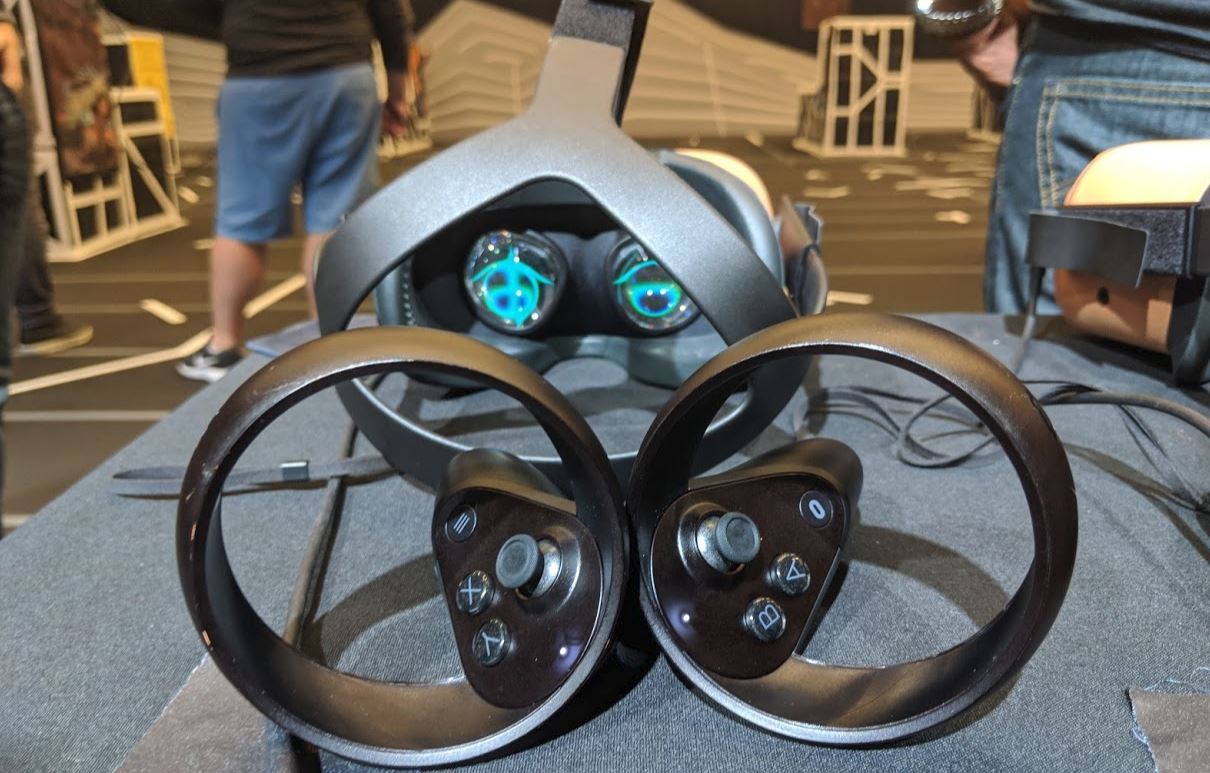
The only problem, then, is for developers more accustomed to Vive’s room-scale outside-in tracking which does a remarkably good job of finding controller and headset positions. For instance, in Valve’s experimental collection of games The Lab there’s an archery game with flames behind the player. The player can take out multiple enemies with a flaming arrow, so it is in the player’s best interests to memorize the location of the flames so that arrows can be lit without even needing to waste time looking away from the invading enemies.
While this use case is not common, it it is an important one. A “constellation” of three, four or more of the original Oculus sensors can be used to let Oculus Rift users play The Lab with the same kind of tracking quality as an HTC Vive. What will happen with a game like The Lab in Rift S, though, is an open question. The biggest task facing the Facebook PC VR team over the next year, then, is giving developers tools, techniques and money so that they can make the transition to Insight tracking not noticeable to the end user.
The transition to Insight should be easier for Oculus-funded apps that were built for two-sensor front-facing setups. It is possible, too, that Oculus could lose the interest of some developers who depend on outside-in room-scale tracking systems to make uncommon interactions happen automatically. Losing those developers on Rift could be disastrous, so I would expect Facebook to develop and release tools that will help creators plan around any problems users might encounter in the switch-over from Constellation to Insight tracking systems.
We should also note that Facebook demonstrated at OC5 how it could use Insight’s cameras to determine body position. If this feature is improved it could solve a separate problem for developers — namely, representing avatar movements realistically.

